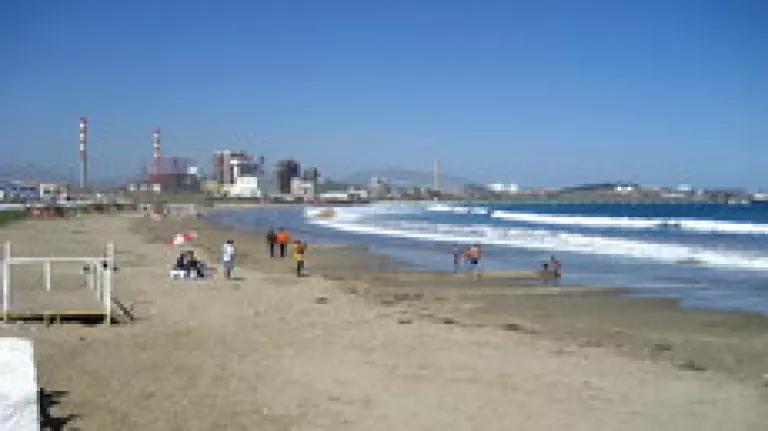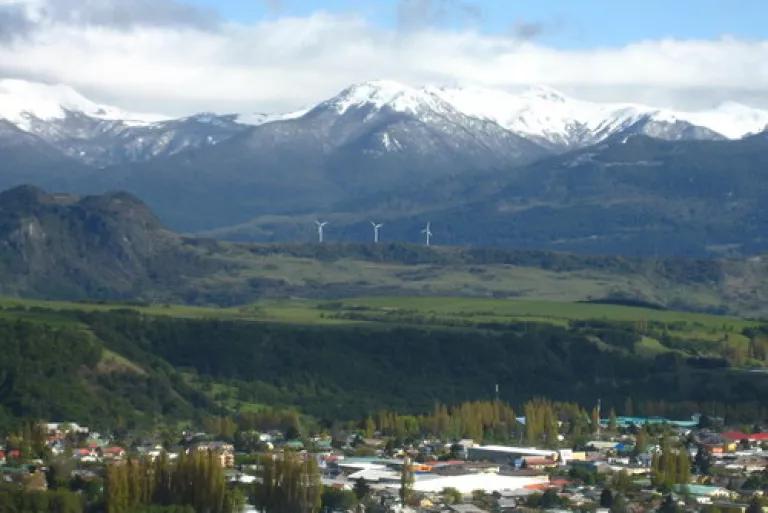
Chile has all imaginable potential to become a Latin American leader in renewable energy development. Yet despite its extraordinary and varied natural resources, apparent political will, institutional stability, and an economy thirsty for new jobs, the sector seems to be growing rather hesitantly. During a recent trip to Santiago, my colleagues Susan Casey-Lefkowitz and Douglass Sims, and I, heard time and again why: there is a widespread perception that the costs of renewable technologies are too high and so they are not economically viable. But if the total, real costs of the alternatives – large hydro and coal – are calculated, renewables suddenly look a lot more attractive.
Chile’s abundance of renewable natural resources is impressive and well known – solar, geothermal, wind, ocean, tidal and mini-hydro potential are all remarkable in this long, thin country. The political will to develop this potential is also apparent. On May 21st, Chilean President Sebastian Piñera announced that he wanted to double the required amount that non-conventional renewable energy (ERNC)* will contribute to the country’s total generation from 10 to 20% by 2020. In doing so, the President backed up the pledge he made in early March, when, during a visit by U.S. Secretary of State Hillary Clinton, he said that “renewable energy, environmentally friendly energy” would be an integral part of the country’s future development after the massive earthquake on February 27th.
Last month, the Minister of Energy, Ricardo Raineri, expressed his intent to push for net-metering in Chile, which would allow smaller, independent energy projects like ERNC to connect to the grid, effectively buying energy from and selling it to the grid in a two-way stream. This policy would be a very helpful support mechanism for ERNC. In addition, the new Ministry of Energy, which was just established on February 1st of this year, is organizing workshops to educate regional leaders and governors about ERNC solutions. And almost a year ago, the Center for Renewable Energy (CER) was started to help independent projects in the sector get off the ground.
With a national unemployment rate of 8.8%, which is as high as 15.5% in regions most affected by the earthquake, and President Piñera’s pledge to create 1 million jobs, the creation of a robust renewables industry would provide the economic growth and the employment opportunities Chileans are looking for. So what’s the hold up?
While in Chile, the discussions we had with government representatives, energy consultants and technical experts all yielded the same conclusion: the costs of ERNC are just too high. But too high compared to what? The two alternatives currently on the table are large hydro and coal. The first is best illustrated by the US$7 billion, 2750MW proposed dam scheme HidroAysén; the second by the US$4.4 billion, 2100MW proposed plant called Castilla. Both are considered to be cheap energy solutions relative to ERNC, but neither of their price tags includes the array of externalities which would be incurred on the public and the government, and no one seems to have done a detailed comparison of the levelized cost of electricity (LCOE) in Chile.
In Chile, water rights are free. Large hydro projects are therefore relatively cheap to run compared to fossil generation because the “fuel” (water) is free. (This effectively provides a subsidy for hydropower, which I plan to discuss in a later post). So even though large dams require a huge up-front investment, they still seem like attractive options because their operating costs are so low once the initial capital investment has been repaid. Yet without taking into account the costs incurred from environmental damages and losses in other sectors, such as Tourism, how will the true price tag of large hydroelectric dams be known or considered? In the case of HidroAysén, the US$7 billion projection does not include the expected losses to Aysén’s growing Tourism industry, or the environmental externalities that the project’s five dams and 1300-mile long transmission line would inflict. Large hydro would seem like a less attractive option, I suspect, if these were taken into account.
Chile imports most of the coal it uses. Although coal is inexpensive (at the present), purchasing this fuel from other countries still adds to the plants’ operating costs. So after the initial capital investment of building a coal-fired power plant is settled, there are some additional costs that these companies must pay. However, electricity costs in Chile are among the highest in the region, so profits are still a sure thing. What isn’t added to these costs is the damage that coal does to public health and to the environment. Chile does not have a law regulating emissions (one is being debated in Parliament now), so these externalities are very real –and very expensive—considerations that should be calculated into the overall costs.

On the other hand, while ERNCs may have a high per kWh cost at the present (as I said above, an up-to-date LCOE analysis needs to be done), these figures are falling as technology advances, manufacturing costs and operating know-how increases. They truly have no fuel costs and can have minimal environmental impacts (large hydro always has significant impacts), so the large up-front investment would cause many fewer externalities. Furthermore, the fostering of these new industries would necessitate new training, labor, construction, maintenance, technical expertise and business know-how – in short, the factors that help grow and economy and create jobs.
Chile has made some initial steps in this direction. As I mentioned above, the country has a national ERNC law (Ley 20.257, available here). It states that as of January 1st, 2010, 5% of the energy that large generators feed to the grid must come from ERNC sources; this percentage will incrementally grow to 10% by 2020. If President Piñera’s new aim is approved, the 2020 goal will be raised to 20%. The Corporation for Production Growth has some financing mechanisms to help small projects overcome financial hurdles. And international companies are increasingly looking to Chile for new wind farm development.

The three wind turbines that power Coyhaique, the capital city in the Patagonia region of Aysen.
But to get the entire sector really growing, the government is going to have to give some support. President Piñera’s doubling of the 2020 ERNC goal was ambitious, forward-thinking and encouraging. However, neither he nor Energy Minister Raineri has presented a roadmap of how to get there. Without incentivizing mechanisms of some kind, like feed-in-tariffs or subsidies, to levelize costs, ERNC projects will remain too risky for investors. Without including the true costs of coal and large hydro in their overall price tags, ERNC will continue to seem economically impractical. And without a robust ERNC sector, massive projects based on old technologies, such as HidroAysén and Castilla, will continue to threaten public healthy, stymie economic growth, and damage the environment.
*In Chile, the phrase “non-conventional renewable energy,” (the abbreviation, ERNC, comes from the Spanish “energias renovables no-convencionales”) is used to exclude large hydro projects over 20MW from the category.
